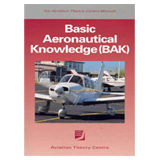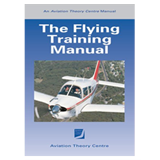[wp_eMember_compact_login]
Climbing and Descending
Welcome to lesson 3, Climbing and Descending. Hopefully you’re rearing to go, as this is a big lesson!
Essentially Climbing is one lesson and Descending is another, but since you’ll need to come back down after practicing each climb, you might as well learn to descend in the same flight!
C&D will put into action your previously learned skills from Straight and Level, by requiring you to hold a heading, set power and set attitudes to achieve various climb and descent profiles.
As you progress through the RPL, there will be an expectation that you have held onto skills and knowledge learned in previous lessons – so take a few minutes to review Straight & Level, specifically: P.A.S.T.
During your Brief, you’ll learn the following and more:
- Introduction to the aircraft ‘forces’ during a climb and descent
- The effect of wind and aircraft weight on our climb and descent performance
- Aircraft glide characteristics and the ‘go-around’
- Techniques to establish and maintain climbs and descents at various speeds
Lesson Techniques
Just as it is important to be able to maintain straight and level flight, so too is it important to be able to conduct a precise climb or descent.
The entry and exit techniques for climbs and descents are in most cases, the same as straight and level – P.A.S.T. The exception is levelling off from a climb, where the letters are rearranged to: A.S.P.T
During your brief, you’ll learn aircraft-specific attitudes for a range of climbs and descent profiles. Do you know the following speeds for your aircraft type?
– The best rate of climb speed
– The best angle of climb speed
– The best range glide speed
Take a look at the datasheets listed above and try to commit your aircraft’s speeds to memory.
Below are some sample videos demonstrating both Climbing and Descending. They’re a little retro, but offer some useful tips on what you’ll be doing in your upcoming lessons.
Resources
Readings
Before attending your Briefing and Lesson, you should have read the following:
- The Flying Training Manual – Chapters 6 and 7
- Basic Aeronautical Knowledge (BAK) – Chapter 6, Climbing and Descending sections. Additional general reading: Chapter 3


Useful Links & Files
Climbing and Descending Brief
Download 4.39 MB
Instructor’s Tips
Questions
This section gives you an opportunity to search for information, which is a skill that will come in handy during your training. Use resources such as your text books or the Internet to answer the following questions.
- What is a ‘go-around’ (try looking in the circuits section of your texts)
- What is the best range glide speed for your aircraft?
- If you increase power, will the aircraft’s nose pitch up or down?
- If you increase power, will the aircraft yaw left or right?
- If the balance ball is sitting to the right, which rudder pedal will centre it?
- How many litres of fuel does your aircraft hold and how many litres an hour does it burn?
Learning Objectives
By the end of this Briefing and Flight, you will be expected to be able to:
- Establish and maintain various climb and descent profiles
- Use the trim wheel to a high degree of precision
- perform a pre-flight inspection of your aircraft with minimal assistance from your instructor
- Recall the best rate, best angle, cruise climb, cruise descent and glide speeds for your aircraft
